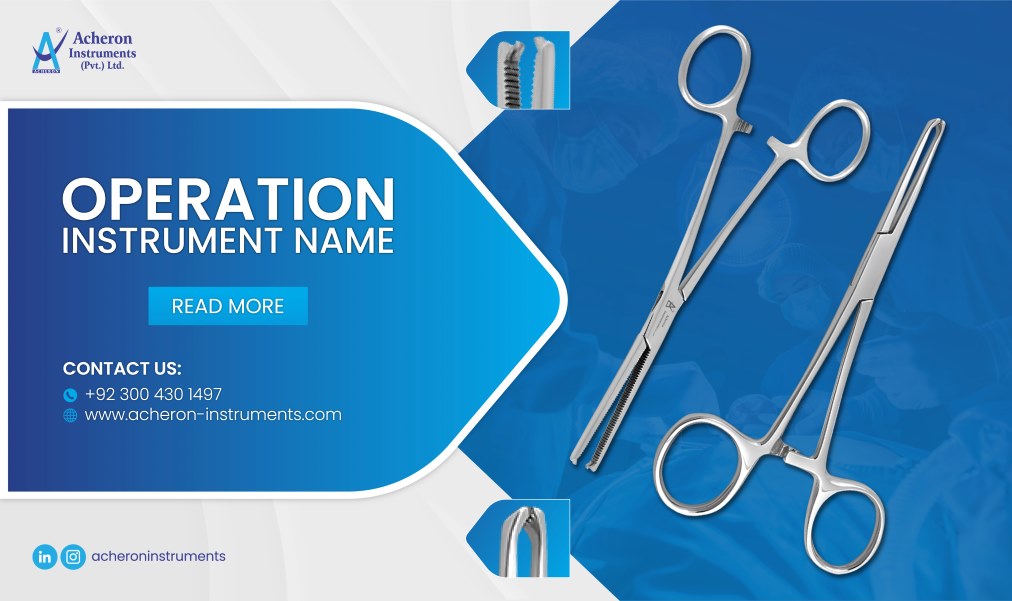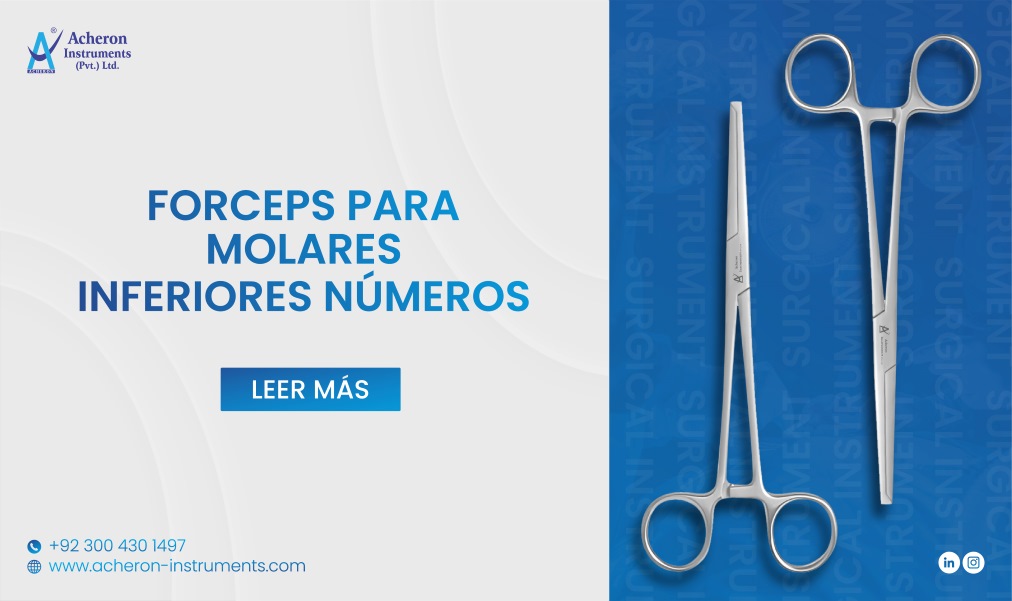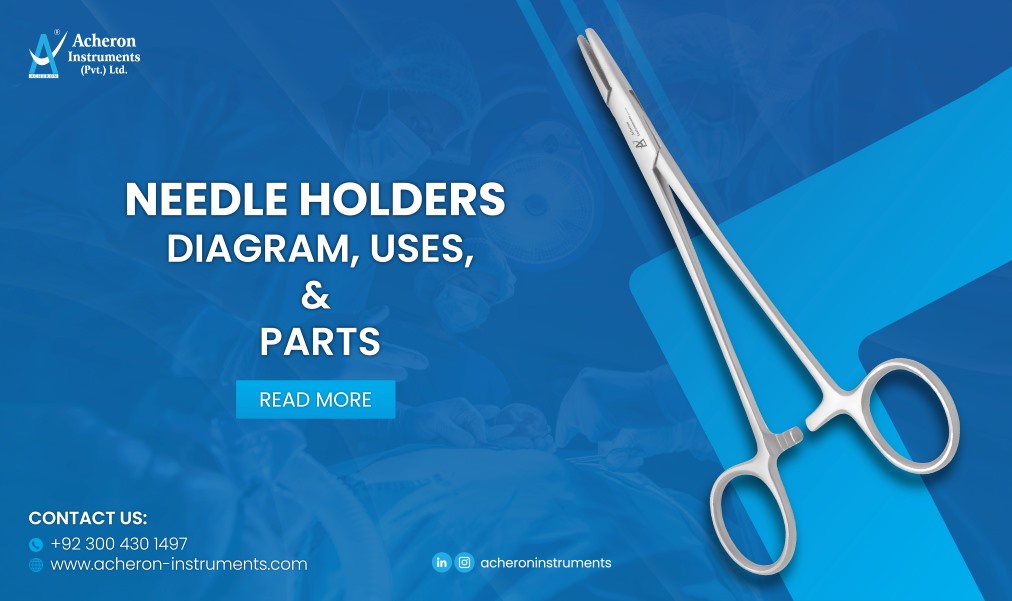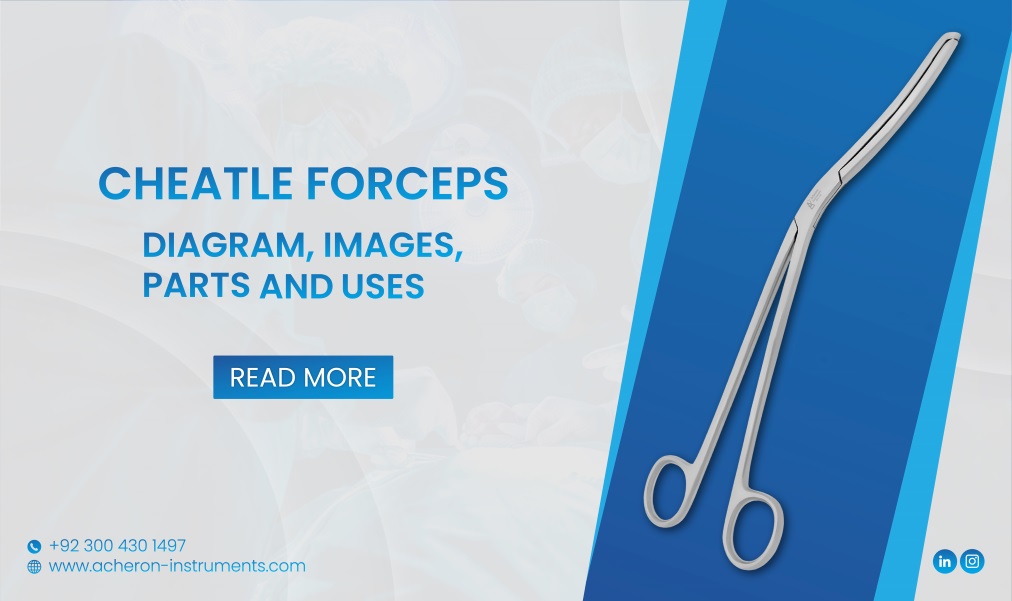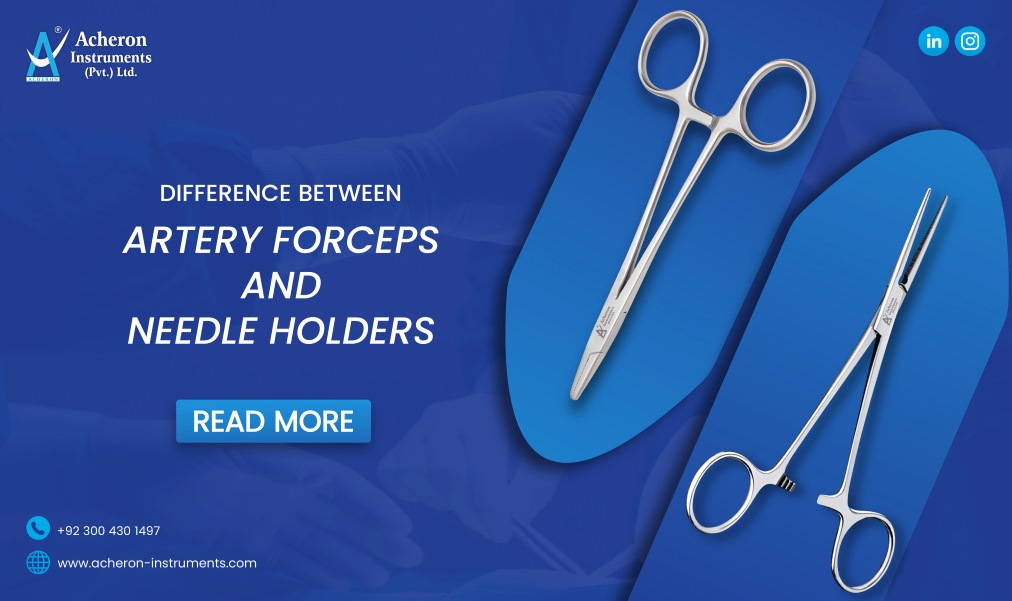
Among various surgical instruments, artery forceps, and needle holders stand out as essential instruments with their distinct designs, and functions. Surgeons use artery forceps also known as hemostats for hemostasis while, use needle holders or drivers for holding suturing needles. Artery forceps feature serrated jaws and a ratchet mechanism maintaining pressure while needle holders feature cross-hatched jaws ensuring precise needle control. Artery forceps ensure hemostasis whereas, needle holders help in accurate wound closure and tissue approximation. Let’s dive into a comprehensive guide for understanding their distinct role and function during procedures.
Key Differences in Artery Forceps and Needle Holders
Before we dive deeper, let’s have a quick summary of the features distinguishing them from each other.
|
Feature |
Artery forceps |
Needle holders |
|
Function |
Control bleeding by clamping and occluding blood vessels. |
Helps in grasping and manipulation of suture needles during procedures |
|
Design/Anatomy |
Serrated jaws and ratcheted handles |
Cross-hatched jaws and ratchet-locking mechanism |
|
Sizes |
Different sizes available with straight or curved jaws |
Different sizes are available including standard and delicate models. |
|
Material |
Stainless steel |
Stainless steel |
|
Usage |
Hemostasis during general, orthopedic, and cardiac surgeries usually. |
Suturing for wound closure, tissue repair |
|
Considerations |
Selection based on bleeding control needs |
Selection based on the size of needles |
Artery Forceps
Artery forceps, also known as hemostatic forceps, are surgical instruments designed to clamp and occlude blood vessels during surgery.
Artery forceps are available in different sizes and shapes including straight or curved jaws based on the surgical needs and anatomical structures.
Types of Artery Forceps
There are different types of Artery forceps based on the use and surgical need:
- Burkitt's Tonsil Artery Forceps: Burkitt’s Tonsil artery forceps feature a self-locking mechanism and facilitate precise control of the tonsil artery during procedures.
- Right Angle Artery Forceps: Right Angle Artery Forceps provide optimal access to arteries and delicate tissues with their right-angled design and tapered tips.
- Wilson Artery Forceps: Wilson Artery Forceps are scissors-like artery forceps for manipulating and securing bleeding vessels during procedures, which are ideal for ENT procedures.
Needle Holders
Needle holders also known as Needle drivers are specialized instruments for handling and maneuvering surgical needles during suturing and stitching. They facilitate surgeons with a firm grip and precise control over the needle for accurate placements of sutures.
Needle holders are available in different sizes and designs including standard and delicate models suitable for various surgical needs.
Types of Needle Holders
There are different types of needle holders depending on the use and need:
- Mayo Hegar Needle Holder: Mayo Hegar Needle Holder is ideal for clamping larger and heavier needles of different lengths. It features strong and wide jaws suitable for heavy needles and a secure grip due to cross-serrations.
- Castroviejo Needle Holder: The Castroviejo Needle holder is a versatile needle holder ideal for handling and inserting needles through various tissues.
- Crile Wood Needle Holder: Crile Wood needle holder is available in serrated and non-serrated versions used to secure and hold surgical needles during suturing procedures.
- Barraquer Needle Holders: Barraquer Needle Holders ensure a secure needle grasp and stability during suturing tasks featuring serrated jaws and spring-loaded handles.
Key Differences
Purpose
Artery Forceps: Artery forceps are specialized for clamping blood vessels and controlling bleeding during procedures.
Needle Holders: Needle holders are designed to hold and manipulate surgical needles during suturing.
Anatomy and Design
Artery Forceps: feature serrated jaws and ratcheted handles, ensuring a secure grip and reliable locking of tissues.
Needle Holders: feature elongated jaws with cross-serrated surfaces and a ratcheted mechanism, ensuring secure needle locking and holding.
Functions and Uses
Artery Forceps:
- Primarily used for controlling bleeding by clamping and occluding blood vessels during surgical procedures
- An essential tool in procedures like vascular surgery, general surgeries, and orthopedic surgeries where hemostasis is necessary.
- Used for grasping and manipulating tissues, retracting structures, and securing surgical drapes.
Needle Holders:
- Holding and maneuvering surgical needles during suturing and stitching
- Facilitate in accurate placement of sutures with a firm grip and precise control
- Indispensable in various surgical specialties including general surgery, plastic surgery, obstetrics, and gynecology where suturing is common.
Surgical Applications
Artery Forceps:
Artery forceps are crucial for procedures that need hemostasis and bleeding control:
- Controlling bleeding during vascular surgery
- Clamping blood vessels in general surgery procedures
- Manipulating tissues and securing drapes during orthopedic procedures
Needle Holders:
- Holding and passing surgical needles during wound closure
- Suturing incisions in Needle holders
- Performing delicate suturing in plastic and microsurgery
Considerations for Surgeons
Surgeons must consider the following considerations for the right choice of surgical instrument:
Selection:
Surgeons must consider specific tasks, or surgical needs for choosing the appropriate surgical instrument.
Technique:
Proper handling and technique are essential for both artery forceps and needle holders effectively and safely.
Maintenance:
Regular cleaning and sterilization are necessary to ensure the longevity and functionality of these instruments.
Conclusion
In conclusion, artery forceps and needle holders are indispensable tools in the surgical toolkit, each serving a vital purpose. Artery forceps are dedicated to controlling bleeding and hemostasis while needle holders are essential for suturing and stitching. Understanding their role and uses is crucial for surgeons to achieve the successful and expected outcomes.
(FAQ) - Differences Between Artery Forceps and Needle Holders
Can Acheron Instruments provide customized options for Artery Forceps and Needle Holders?
Yes, Acheron Instruments offers customization options for both Artery Forceps and Needle Holders to meet specific surgical needs and preferences. Please contact us for more information on our customization services.
Where can I purchase Artery Forceps and Needle Holders from Acheron Instruments?
You can purchase Artery Forceps and Needle Holders directly from Acheron Instruments. Visit our website or contact our sales team for more information on ordering and pricing.
Are Artery Forceps and Needle Holders covered by warranty?
Yes, all products from Acheron Instruments are covered by a warranty. Please refer to our warranty policy for more information on coverage and terms.


